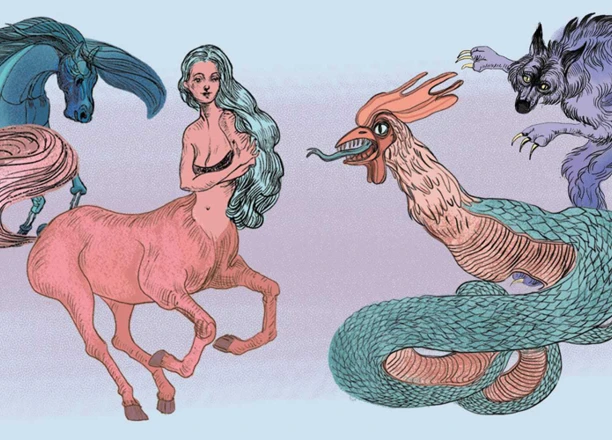Mythical creatures have always captivated our imagination, and in Greek mythology, they play a significant role in the rich tapestry of ancient stories. These beings encompass a wide range of symbolism and meaning, each with their unique attributes and attributes that convey profound messages. From the mysterious Centaur to the enigmatic Sphinx, the powerful Hydra to the immortal Phoenix, and the fearsome Minotaur to the destructive Chimera, each mythical beast holds a special place in Greek mythology. In this article, we will delve into the intricate symbolism and profound meaning behind these mythical creatures, unraveling their significance in ancient Greek culture and their relevance in our modern world.
The Importance of Mythical Beasts in Greek Mythology
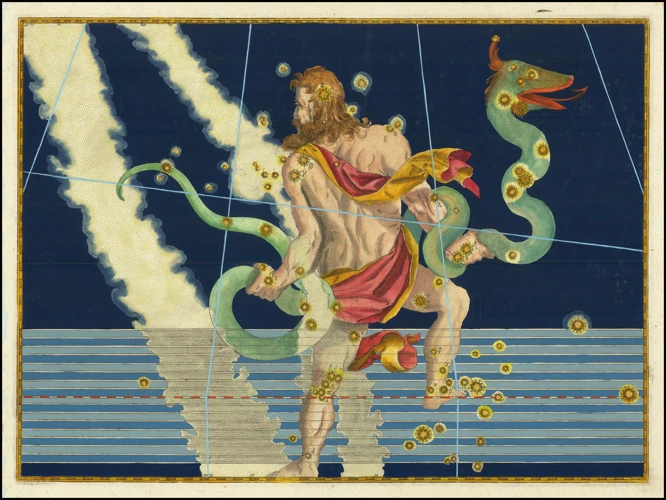
The mythical beasts in Greek mythology hold immense importance in shaping the narratives and beliefs of the ancient culture. These creatures serve as symbols and metaphors, reflecting the values, fears, and aspirations of the Greek people. They embody various qualities and characteristics that transcend the boundaries of the natural world, allowing for exploration of complex themes and ideas. The significance of these mythical beasts extends beyond mere entertainment; they provide insightful lessons about human nature, morality, and the consequences of one’s actions. These creatures often interact with Greek heroes and gods, showcasing their power and influencing the outcome of epic quests and battles. One such example is the encounter between Perseus and the monstrous Medusa, where the hero’s triumph over the beast symbolizes the triumph over one’s inner demons. The tales of mythical beasts not only provide thrilling adventures but also emphasize the importance of courage, determination, and intelligence in overcoming challenges. These creatures are also intertwined with other aspects of Greek mythology, such as the legendary Trojan War and the prophecies of the Oracle of Delphi, making them integral pieces of the larger mythological tapestry.
1. The Symbolism of the Centaur

The Centaur holds deep symbolism within Greek mythology, embodying the duality of nature and the complex relationship between man and beast. As a mythical creature with the upper body of a human and the lower body of a horse, the Centaur represents the fusion of two seemingly contrasting entities. This duality reflects the constant internal struggle between the civilized and the untamed, the rational and the instinctual. The Centaur often serves as a metaphor for the balance between intellect and primal desires, reminding us of the importance of temperance and self-control. In Greek mythology, Centaurs are known for their wild and unruly behavior, sometimes associated with powerful heroes such as Hercules and Theseus. These stories emphasize the need for harmony and moderation in order to navigate the complexities of life. The Centaur’s symbolism also extends to the realm of education and knowledge, as they are often depicted as wise and knowledgeable creatures. Their association with Chiron, the renowned centaur who served as the tutor of many Greek heroes, further reinforces their symbolic connection to wisdom and mentorship. While the Centaur may appear as a paradoxical figure, their symbolism sheds light on the delicate balance between humanity’s rational mind and its primal instincts.
1.1 The Half-Human, Half-Horse Form
The Centaur, with its distinctive half-human, half-horse form, holds deep symbolism in Greek mythology. This hybrid creature embodies the duality of nature within humanity. The upper half, representing the human form, symbolizes intellect, reason, and civilization. It signifies the rational side of human nature, showcasing qualities such as wisdom and knowledge. On the other hand, the lower half, representing the horse, embodies instinct, passion, and untamed wildness. This symbolizes the primal and instinctual aspects of human nature. The Centaur serves as a reminder of the delicate balance between reason and instinct that exists within each individual. Additionally, the Centaur’s form suggests the connection between humans and animals, blurring the boundaries between the civilized world and the natural world. This duality is exemplified in myths involving Centaurs, such as the encounter between Heracles and the Centaur Nessus. The half-human, half-horse nature of Centaurs also raises questions about identity and acceptance. These mythical beings prompt reflection on the complexity and diversity of human existence, urging us to explore the different facets of our own nature. The Centaur’s presence in Greek mythology often bridges the gap between the mortal and the divine, making it an intriguing and multidimensional creature to study and contemplate. [Anchor: Greek Mythological Heroes]
1.2 The Duality of Nature
The Centaur, one of the most iconic mythical beasts in Greek mythology, represents the duality of nature. With its half-human, half-horse form, the Centaur embodies the juxtaposition of the human and animal characteristics. This symbolism reflects the inherent conflict within individuals, as they struggle to balance their primal instincts with their rational thoughts. The Centaur serves as a reminder that humans are not purely good or evil, but rather a complex combination of both. This duality is exemplified in the story of Chiron, a wise and benevolent Centaur who possesses exceptional knowledge and wisdom, yet still retains the wild and untamed nature of his equine counterpart. Through Chiron’s character, the Centaur represents the potential for harmony and balance between the two sides of human nature. The duality of the Centaur also extends to its role as both a teacher and a warrior. Centaur scholars, known for their expertise in medicine, philosophy, and astrology, are revered for their wisdom and intellect. However, Centaurs can also display aggression and violence, often depicted as skilled archers in battle. This dichotomy emphasizes the complexity of human nature, where one can possess both intellectual prowess and primal instincts. The Centaur’s duality serves as a cautionary reminder of the constant struggle within individuals to harness their conflicting impulses and align them towards harmony and self-control.
2. The Meaning Behind the Hydra
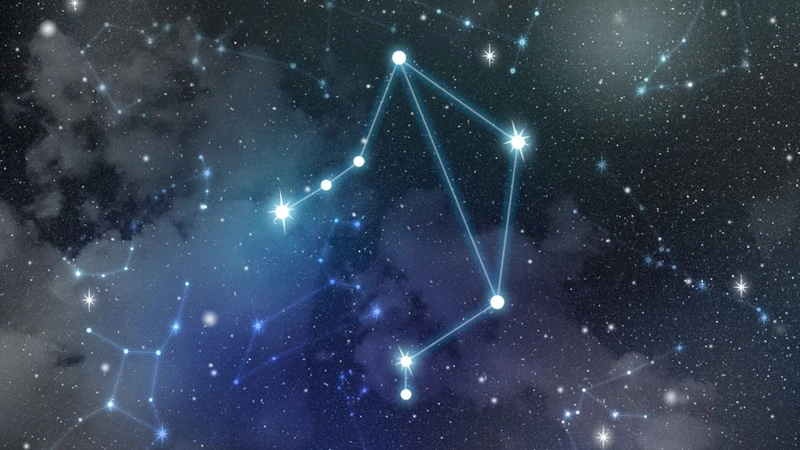
The Hydra, a legendary creature from Greek mythology, holds deep symbolic meaning. This multi-headed serpent is known for its regenerative powers, as each decapitation results in the growth of two new heads. This ability represents the concept of resilience and the triumph over adversity. The Hydra’s presence in myths often serves as a formidable challenge for heroes, such as Perseus, Jason, or Theseus, who faced numerous trials and tribulations. The Hydra also symbolizes chaos and the destructive forces that exist in the world. Its seemingly endless number of heads and venomous nature make it a fearsome adversary, reflecting the unpredictable and chaotic aspects of life. Exploring the meaning behind the Hydra allows us to delve into the complexities of human existence and the inner struggles we face in our quest for personal growth and triumph over adversity.
2.1 The Regenerative Power
The Hydra, one of the most intriguing mythical beasts in Greek mythology, is renowned for its regenerative power. This multi-headed serpent-like creature had the ability to regrow its severed heads, making it a formidable adversary. This symbolism of regeneration holds great significance in Greek mythology, representing the cycle of life and death. Each time a head of the Hydra was cut off, two new ones would grow in its place, making it an almost impossible task to defeat this resilient monster. This regenerative power is a metaphor for the ever-changing nature of the world and the eternal cycle of growth and decay. The Hydra’s ability to rejuvenate itself also serves as a cautionary tale, reminding individuals of the consequences of their actions. Just like the Hydra’s heads multiplying, our actions can have far-reaching effects and lead to unintended consequences. This theme of regeneration and the interconnectedness of actions can also be seen in the legendary Trojan War, where a single act of deception led to a decade-long conflict with far-reaching consequences. The Hydra’s regenerative power serves as a reminder that our actions have consequences that can extend far beyond our initial intentions. To delve deeper into the world of Greek mythology, you can explore the link to learn more about the legendary Trojan War and its impact on Greek history and culture.
2.2 The Symbol of Chaos
The Hydra, a fearsome mythical beast with multiple heads, holds a profound symbolic meaning in Greek mythology. One of the significant aspects of its symbolism is its association with chaos. Each time one of the Hydra’s heads was severed, two more would grow in its place, making it nearly impossible to defeat. This constant regeneration represents the chaotic and unpredictable nature of the creature. The Hydra’s relentless ability to multiply and cause havoc parallels the concept of chaos, which disrupts order and stability. In Greek mythology, chaos is often depicted as a primordial force that existed before the gods and the world as we know it. It represents the state of disorder, confusion, and unpredictability that can arise when natural and societal structures break down. The symbol of chaos embodied by the Hydra serves as a reminder of the fragility of order and the ever-present potential for chaos to disrupt the harmony of the world. The Hydra’s association with chaos can be seen in various mythological narratives, including its involvement in battles such as the legendary Trojan War. According to the myths, the Hydra was eventually defeated by the hero Hercules, who cauterized each neck stump to prevent the growth of additional heads. This victory represents the triumph of order and control over chaos, restoring balance and harmony. The symbolism of the Hydra as a symbol of chaos offers a deeper understanding of the ancient Greek’s perception of the world and the constant struggle to maintain order in the face of chaos.
3. The Significance of the Sphinx
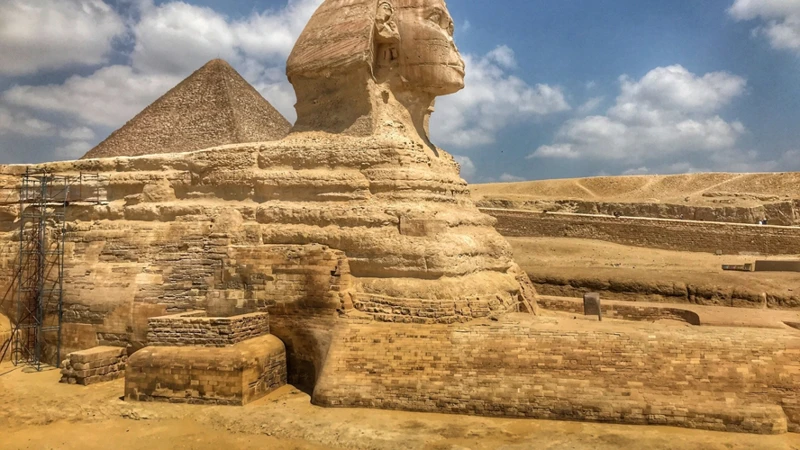
The Sphinx holds great significance in Greek mythology, representing a fusion of human and animal elements. This enigmatic creature possesses the head of a human, often that of a woman, and the body of a lion. This extraordinary amalgamation evokes a sense of mystery and intrigue, captivating the imagination of ancient Greeks. The Sphinx is often associated with riddles and puzzles, adding to its allure as a symbol of intellectual prowess and wisdom. In Greek mythology, the most famous encounter with the Sphinx takes place in Thebes, where it posed a riddle to anyone who sought to pass. The Sphinx’s riddles were notoriously challenging, and those who failed to answer correctly would meet a grim fate. The significance of the Sphinx extends beyond its role as a formidable guardian; it represents the complexity of the human condition, the need to seek knowledge, and the consequences of ignorance. Even today, the Sphinx continues to fascinate and inspire, reminding us of the enduring power of ancient Greek mythology.
3.1 The Human and Animal Fusion
The human and animal fusion seen in the Sphinx is a captivating aspect of Greek mythology. This mythical creature, with the body of a lion and the head of a human, represents the inherent duality of nature and the interconnectedness of different beings. The fusion of human and animal traits in the Sphinx symbolizes the amalgamation of instinct and reason, strength and intellect. This unique combination embodies the complexity of human existence, highlighting the delicate balance between our primal instincts and our capacity for rational thought. The Sphinx also serves as a reminder that we are not separate from the natural world, but rather an integral part of it. The enigmatic nature of the Sphinx’s appearance sparks curiosity and intrigue, inviting us to ponder the mysteries of our own existence and the cyclical nature of life. In Greek mythology, the Sphinx is often associated with riddles and puzzles, challenging those who encounter it to unravel its enigma. Such encounters are prevalent in stories like the legendary tale of Oedipus, who successfully answered the Sphinx’s riddle and gained passage to Thebes. The human and animal fusion embodied by the Sphinx provokes contemplation about our own dual nature and encourages us to explore the depths of our humanity. As we delve into the symbolism behind this mythical creature, we begin to unravel the intricate relationship between the human and animal realms and delve deeper into the fascinating depths of Greek mythology.
3.2 The Enigma and Riddles
The Sphinx, with its unique fusion of human and animal features, is known for its enigmatic nature and its association with riddles. This aspect of the creature adds an air of mystery and intrigue to its symbolism. The Sphinx is often depicted as a guardian figure, posing a riddle to those who wish to pass by. Failure to answer correctly would result in dire consequences, while success would grant passage and access to hidden knowledge or treasures. This emphasis on riddles highlights the importance of intellectual prowess and critical thinking in Greek mythology. The Sphinx’s enigmatic nature also serves as a reminder of the complexity and depth of the world around us. It symbolizes the idea that not everything can be easily understood or explained, and that wisdom often lies in the journey itself rather than the destination. The association between the Sphinx and riddles also draws connections to other elements of Greek mythology, such as the legendary Trojan War, where the clever use of ruses and strategies played a significant role. Additionally, the riddles posed by the Sphinx can be seen as a representation of the enigmatic prophecies delivered by the Oracle of Delphi, another notable aspect of Greek mythology. The Sphinx’s role as a purveyor of riddles adds depth and intrigue to its symbolic significance, leaving us pondering the mysteries of life and the pursuit of knowledge.
4. The Symbolic Nature of the Phoenix
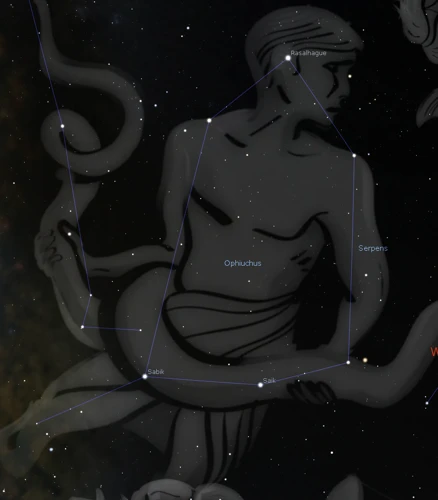
The Phoenix is a mythical creature that holds deep symbolic meaning in Greek mythology. This majestic bird represents the concept of death and rebirth. According to legend, the Phoenix possesses the ability to rise from its own ashes, symbolizing the cyclical nature of life and the eternal cycle of death and renewal. The Phoenix’s fiery destruction and subsequent resurrection make it a powerful symbol of transformation and renewal. It serves as a reminder that even in the face of adversity and destruction, new beginnings and opportunities can arise. The Phoenix also holds associations with immortality, as its ability to transcend death suggests a form of eternal existence. Its symbolic significance can be seen in various mythological contexts, such as its association with the legendary Trojan War or the enigmatic prophecies of the Oracle of Delphi. The symbolism of the Phoenix serves as a profound reminder of the transformative power of resilience and the potential for rebirth even in the darkest of times. [1]
4.1 Death and Rebirth
In Greek mythology, the mythical creature known as the Phoenix embodies the concept of death and rebirth. The Phoenix is a magnificent bird that possesses the ability to rise from its own ashes after death, symbolizing the cyclical nature of life. This theme of death and rebirth is prevalent in various Greek myths and holds deep significance. The Phoenix’s ability to undergo transformation and emerge renewed speaks to the eternal nature of life and the concept of regeneration. This symbolism is also seen in the cycle of seasons, where the earth undergoes periods of death and decay in winter, only to be reborn and flourish in spring. The story of the Phoenix teaches us important lessons about resilience, embracing change, and finding hope in the face of adversity. It serves as a reminder that even in the darkest times, there is always the potential for rebirth and renewal. The concept of death and rebirth is not limited to the Phoenix alone but appears in other aspects of Greek mythology as well, such as the intricate prophecies of the Oracle of Delphi, which explore the cyclical nature of life and the inevitability of change.
4.2 Immortality and Transformation
Immortality and transformation are key themes associated with the mythical creature known as the Phoenix. This majestic bird is said to have the ability to cyclically regenerate from its own ashes, symbolizing the concept of immortality and rebirth. The Phoenix is often associated with fire, which represents both destruction and purification. Its ability to rise from the ashes signifies the transformative power of overcoming adversity and emerging stronger than before. In Greek mythology, the Phoenix is considered a benevolent creature, representing hope, renewal, and the eternal cycle of life. Its symbolism extends beyond the physical realm, serving as a metaphor for the human experience of overcoming hardships and transcending limitations. The concept of transformation is deeply ingrained in Greek mythology, as seen in the various tales of gods and heroes undergoing profound personal changes. The transformative journey of characters such as Hercules or Odysseus showcases the potential for growth, learning, and self-discovery. The link between immortality, transformation, and the Phoenix can also be found in the enigmatic prophecies of the Oracle of Delphi, which explore the cyclical nature of life and the pursuit of eternal wisdom. The Phoenix, with its mythical qualities, serves as a powerful symbol of hope and resilience in the face of challenges and reminds us of the transformative potential within ourselves.
5. The Meaning of the Minotaur
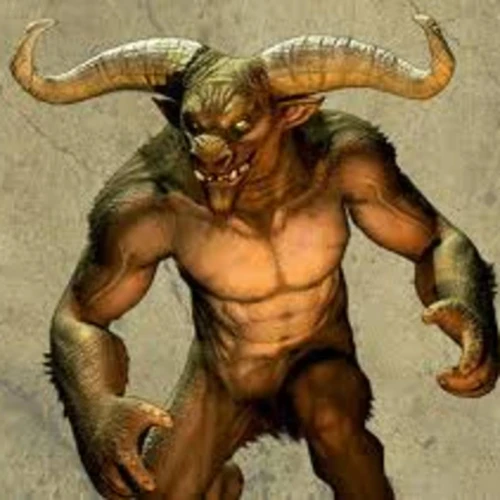
The Minotaur, a creature of Greek mythology, holds deep symbolic meaning. As the offspring of the union between Queen Pasiphae of Crete and a magnificent bull, the Minotaur possesses a unique and terrifying appearance. With the head of a bull and the body of a man, this hybrid creature represents the duality of human nature. The Minotaur symbolizes primal instincts and the raw power of the animalistic side within us. In the myth, the Minotaur is confined to the labyrinth, a complex maze designed by the architect Daedalus. This labyrinth represents the confinement and imprisonment of our own inner struggles and desires. Theseus, a hero of Greek mythology, embarks on a quest to slay the Minotaur, representing the triumph of reason and societal norms over base instincts. The story of the Minotaur serves as a cautionary tale about the consequences of unchecked desires and the importance of self-control and discipline. The symbolic nature of the Minotaur continues to resonate, reminding us of the eternal struggle between our animalistic inclinations and our more civilized selves. For more fascinating insights into Greek mythology, you can explore the mysteries and prophecies of the Oracle of Delphi.
5.1 The Bull-Headed Humanoid
The Minotaur, a fearsome creature from Greek mythology, is often depicted as a bull-headed humanoid. This unique fusion of human and bull attributes holds significant symbolism and meaning. The bull, known for its strength and power, symbolizes raw instincts, aggression, and untamed nature. The human half represents intelligence, civilization, and consciousness. The Minotaur’s dual nature embodies the struggle between primal instincts and higher reasoning. This symbolism highlights the internal conflicts that humans often face when trying to balance their animalistic desires with their rational thoughts. The Minotaur’s bull head also connects it to the sacredness and reverence given to bulls in ancient Greek culture, where they were associated with gods like Poseidon and Zeus. Additionally, the group of myths surrounding the Minotaur is often intertwined with the enigmatic Oracle of Delphi and its prophecies, as heroes like Theseus embarked on their quests to face the Minotaur. This link paints the Minotaur as not just a physical adversary, but also a representation of the obstacles and challenges that heroes must overcome on their journeys. The Minotaur’s bull-headed humanoid form is a visual representation of the internal struggle and external conflicts heroes face on their path to self-discovery and triumph over adversity.
5.2 The Labyrinth and Symbol of Confinement
The Minotaur, with its bull-headed humanoid form, is a mythical creature deeply associated with the symbol of confinement through the labyrinth. In Greek mythology, the Minotaur was imprisoned within a vast maze-like structure known as the Labyrinth, designed by Daedalus. This intricate maze represents not only physical confinement but also symbolizes the psychological and emotional barriers that individuals may face. The labyrinth serves as a metaphor for the complexities of one’s own mind, where the Minotaur represents the fears and inner struggles that trap and confine us.
The confinement within the Labyrinth is a reflection of the consequences of unchecked desires and the consequences of hubris. In the legend of the Minotaur, King Minos, driven by his wife’s infidelity and his own arrogance, refuses to honor his agreement with Poseidon by sacrificing a majestic bull. As a result, Poseidon curses Minos’ wife to fall in love with the bull, which leads to the birth of the monstrous Minotaur. This tale serves as a cautionary reminder of the destructive consequences of defying the gods and disregarding moral responsibilities.
The labyrinth also represents the challenges and complexities of life itself. Just as Theseus from Greek mythology embarked on a perilous journey into the Labyrinth to slay the Minotaur and free his people from tribute, we too face our own personal labyrinths. These can be the struggles and obstacles we encounter in our journey towards self-discovery and personal growth. By confronting and overcoming these challenges, we can emancipate ourselves from the confinement of our own fears and limitations.
The concept of confinement and the symbolism of the labyrinth can also be seen in other aspects of Greek mythology, such as the enigmatic Oracle of Delphi. The Oracle was consulted by numerous individuals seeking guidance and answers to their most pressing questions. The labyrinthine journey to the Oracle’s sanctuary mirrored the complexity and uncertainty of life. By visiting the Oracle, individuals hoped to find clarity and escape from the confinements of doubt and confusion.
The Minotaur and the Labyrinth in Greek mythology serve as powerful symbols of confinement. They remind us of the consequences of our actions and choices, the complexity of the human mind, and the challenges we face in our personal journeys. By navigating through our own metaphorical labyrinths, we can strive for liberation and self-discovery. The symbolism of the labyrinth extends beyond the confines of the Minotaur’s tale, intertwining with other intriguing aspects of Greek mythology, such as the enigmatic Oracle of Delphi and its prophecies.
6. The Mythical Power of the Chimera
The Chimera is a mythical beast that holds a significant place in Greek mythology. This fearsome creature is composed of various animal parts, including the body of a lion, the head of a goat, and the tail of a serpent. The Chimera is a symbol of fear and destruction, representing the chaos and unpredictability of life. Legends tell of this creature terrorizing villages, spewing fire and causing havoc wherever it goes. Its existence serves as a reminder of the forces of nature that are beyond human control. The Chimera’s power lies in its ability to strike fear into the hearts of mortals, reminding them of their vulnerability and the need to navigate life’s challenges with caution and wisdom. In Greek mythology, this mythical beast interacts with heroes such as Bellerophon, who attempts to slay the terrifying creature with the help of the winged horse Pegasus. The story of the Chimera showcases the indomitable spirit of human courage and the importance of confronting and overcoming one’s fears. To learn more about the intriguing world of Greek mythology, you can explore the enigmatic Oracle of Delphi and its prophecies, which played a crucial role in shaping the destinies of gods and mortals alike.
6.1 The Mixed Creature Composition
The mixed creature composition of the Chimera is a fascinating aspect of its symbolism and meaning in Greek mythology. This fearsome beast is often depicted as having the body of a lion, the head of a goat emerging from its back, and a serpent’s tail. Each component of the Chimera represents different elements and qualities, creating a creature that is both awe-inspiring and terrifying. The lion’s body symbolizes strength, power, and ferocity. It embodies the predatory nature and dominance over other creatures. The goat’s head signifies stubbornness, wildness, and unpredictability. It represents a sense of duality and the clash of opposing characteristics. The serpent’s tail, a common symbol in Greek mythology, represents fertility, regeneration, and immortality. It serves as a reminder of the ever-changing nature of life and the cycle of death and rebirth. The combination of these animal features creates a creature that encapsulates both the beauty and the darkness of the natural world. This mixed composition also highlights the Greek belief in the coexistence of different forces and elements, emphasizing the complex and intricate nature of the world they inhabited. The Chimera’s mixed creature composition adds to its allure and makes it an enduring mythical symbol, inspiring awe and fascination for generations to come.
To learn more about the Oracle of Delphi and its mysteries and prophecies in Greek mythology, you can check out our article on the enigmatic Oracle of Delphi.
6.2 The Symbol of Fear and Destruction
The Chimera, a mythical creature from Greek mythology, is a potent symbol of fear and destruction. This monstrous beast, with its composite body consisting of a lion’s head, a goat’s body, and a serpent’s tail, strikes terror into the hearts of those who encounter it. The lion’s head exudes raw power and ferocity, while the goat’s body represents chaos and unpredictability. The serpent’s tail, with its venomous nature, adds an element of danger and death. The Chimera’s very existence embodies the fears and anxieties of ancient Greek society, reflecting the unpredictable and destructive forces that they believed could threaten their lives and civilization. This fantastical creature serves as a reminder of the dangers that lurk in the world and highlights the need for courage and resilience in the face of adversity. It also serves as a cautionary tale, warning against the consequences of arrogance and hubris. The Chimera’s symbolism has endured through the ages, inspiring works of art, literature, and even contemporary representations in popular culture. It continues to evoke a sense of primal fear and fascination, reminding us of the enduring power of mythology.
Conclusion
In conclusion, the mythical beasts in Greek mythology hold a profound significance, symbolizing various aspects of human nature, morality, and the human experience. These creatures serve as powerful metaphors, reflecting the values, fears, and aspirations of the ancient Greek culture. From the duality represented by the Centaur to the regenerative power of the Hydra, from the enigmatic Sphinx to the immortal Phoenix, and from the confinement symbolized by the Minotaur to the destructive nature of the Chimera, each mythical beast carries its unique symbolism and meaning. These creatures play vital roles in the epic quests and adventures of Greek heroes and gods, influencing the outcomes and imparting valuable lessons. The tales of these mythical beasts continue to captivate our imagination and serve as reminders of the complex and intricate ideas embedded in Greek mythology. Exploring the symbolism and meaning behind these creatures helps us gain a deeper understanding of ourselves and the world around us. Whether it be the triumph of good over evil or the consequences of hubris, the mythical beasts in Greek mythology continue to hold relevance in our modern society, reminding us of the timeless truths they illustrate.
Frequently Asked Questions
1. What role did mythical beasts play in Greek mythology?
Mythical beasts played a significant role in Greek mythology as symbols and metaphors, reflecting the values, fears, and aspirations of the ancient Greek culture. They showcased the power of gods and heroes, and their encounters with these creatures often conveyed important moral lessons.
2. Why were centaurs portrayed as half-human, half-horse?
The portrayal of centaurs as half-human, half-horse creatures represented the duality of nature. It symbolized the conflict between man’s rational and animalistic instincts. The centaur’s unique form served as a reminder of the delicate balance between civilization and primal instincts.
3. What is the significance of the Hydra’s regenerative power?
The Hydra’s regenerative power symbolizes the unstoppable force of chaos. When one of its heads was cut off, two more would grow in its place. This represents how disorder and chaos can proliferate if left unchecked, emphasizing the importance of order and control.
4. Why is the Sphinx known for its enigma and riddles?
The Sphinx is known for its enigma and riddles because it represents the mysterious and unpredictable nature of life. Its riddles challenged mortals to think critically and solve complex problems, highlighting the importance of wisdom and intellect in navigating challenges.
5. What does the Phoenix’s death and rebirth symbolize?
The Phoenix’s death and rebirth symbolize the cycle of life, death, and resurrection. It represents the idea of transformation and the ability to rise from the ashes, emphasizing the concepts of renewal, hope, and eternal life.
6. Why was the Minotaur depicted with a bull-headed humanoid form?
The Minotaur was depicted with a bull-headed humanoid form due to its origin as the offspring of a human and a bull. Its appearance symbolizes the amalgamation of both human and animal nature, representing the struggle between civilization and primal instincts.
7. What is the significance of the labyrinth in the story of the Minotaur?
The labyrinth is a symbol of confinement and imprisonment, representing the internal struggles and challenges that individuals face. It mirrors the complexity of navigating one’s inner self and the journey towards self-discovery.
8. Why is the Chimera considered a symbol of fear and destruction?
The Chimera is considered a symbol of fear and destruction due to its terrifying appearance and lethal abilities. Its combination of multiple animal forms represents the convergence of different sources of danger, emphasizing the fear of the unknown and the destructive forces that lurk in the world.
9. What does the mixed creature composition of the Chimera represent?
The mixed creature composition of the Chimera represents the blending of different aspects and attributes. It symbolizes the diversity and complexity of the world, highlighting the idea that beauty and strength can be found in the amalgamation of elements.
10. How do mythical beasts in Greek mythology continue to influence modern culture?
Mythical beasts in Greek mythology continue to influence modern culture through various mediums such as literature, art, and entertainment. They inspire creativity, spark imagination, and serve as cautionary tales about the human condition and the consequences of our actions.

